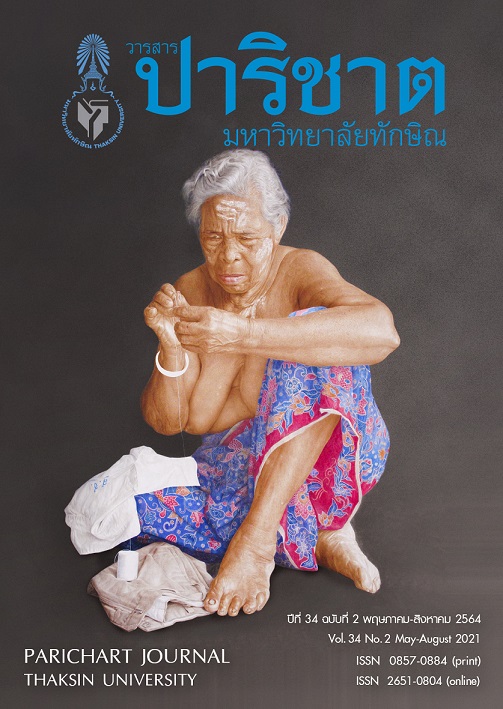The Study of Feasibility of Strategic Management of Thai Traditional Market : Nong-Mon Model
Main Article Content
Abstract
The purposesof this research were 1) toexamine feasibilityof Thai traditional market
managementof four business types, 2) toanalyzestrengths, weaknesses,opportunities, and threats, and 3) to develop Nong-mon market management strategy to the traditional Thai marketing management, Nong-mon Model, togaininternationalcompetitiveadvantages.This researchappliedmixedmethods.The documentaryresearch wasused toanalyzeand conclude important factors of traditional Japanese market. A quantitative method was applied to analyze the feasibility in terms of market, production, breakeven, profit, risks, and business managementapproach. A qualitativemethod wasemployed toexamineappropriateresearch problems, using an in-depth interview and a focus group. The findings on the management were shown as follows. The marketing faced a problem on state policy. The production encountered shortage of raw materials. The breakeven and the profit had some problems on recording capital information. With reference to the risks, they were relevant to changes ofexternal factors.The business development faced problemsonentrepreneurs’ insufficient knowledge on such development. The strength of Nong-mon was its reputation while its weakness was that its brand wasnot muchrecognized.Theopportunityincluded thetourism promotion policyof Chonburi.Thethreat was stagnant tourism.Suchsituationsand problems brought Nong-mon model, including projects aiming at developing Nong-mon market using
the traditional Japanese market as a model.
Article Details
References
Hongsombat, S., & Boonkongsan,P. (2018). Impact factorsoncommunity tourism success of Samchuk 100 yearsmarket in Suphanburi Province. Journal of Modern Management Science, 11(1), 86–105. (In Thai)
Manirochana, N., & Suwanno, S. (2018). A study of slow tourism potential at Phanat Nikhom, Chonburi Province. Parichart Journal, 31(2), 291–310. (In Thai)
Chaimuang, N., & Kanboonruang, C. (2018). Strategic management of social enterprise to Thailand 4.0. Payap University Journal, 28(1), 1–18. (In Thai)
Porter, M. (1996). What is strategy?. Harvard business review, 74(6) 61–78.
Kuntonbutr, C. (2014).Feasibility study. Bangkok: Chulalongkorn UniversityPrinting House. (In Thai)
Boontoo, M. (2009). The accounting performance of community business in Uthaithani Province. Academic Journal Uttraradit Rajabhat University, 4(10), 30-38. (In Thai)
Vichian, V. (2014). The fundamental marketing problems affecting market growth of bamboo and rattan handicraft manufacturers in Thailand. Executive Journal, 24(3), 98-104.
Viriyasuebphong, P. et al., (2555). The Research and development of expansion opportunities for Thai hotels industry. Chon Buri: Burapha University. (In Thai)


